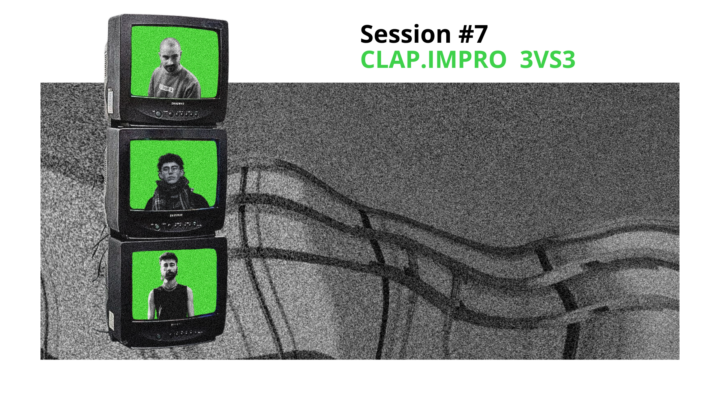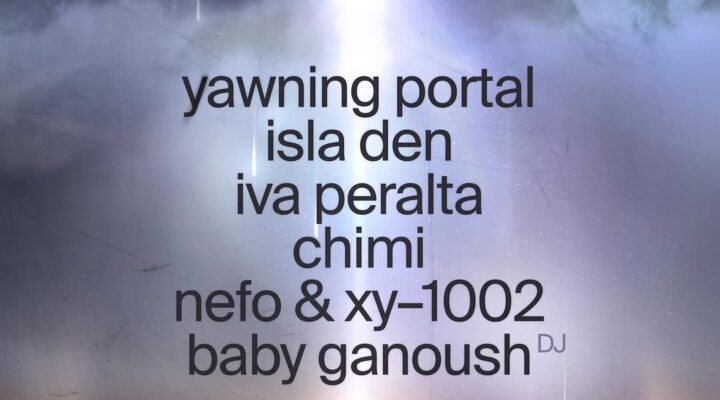In:Resonance 31.10 [full]
31 October - De Thomaskerk, Amsterdam
€22
In:Resonance is a spatial audio event series that transforms extraordinary spaces in and around Amsterdam into immersive sonic environments. This edition takes place inside the striking brutalist architecture of De Thomaskerk, where two evenings of site-specific performances invite audiences into a world of tactile shifts, exploring spatial movement, soft and aggressive resonance.
Across the event, four performances will unfold on a custom-built sculptural sound system, allowing the audience to step into the music itself — surrounded by speakers, performers, and the architecture’s living, breathing reverberation.
The Centre Cannot Hold
This edition revolves around the beauty of collapse, contrast, and transformation. Each work explores how resonance arises in tension, where control meets decay, and dissonance becomes harmonious. We are drawn to rough, tactile images: bare rock breaking through soft moss, iridescent chemical sheens, the worn scars of a beloved object, the hard shell with a soft core. Beauty here is not polished or obvious, but layered, strange, and alive.
The performances embrace friction, residue, and metamorphosis. They are not metaphors for destruction but invitations to witness how sound, space, and material can shift into unexpected ways. We look directly into the chaos and find awe in its transformation.
Step into the space, let the walls breathe, and feel the sound move through and around you.
A solo performance by Andreas Tegnander exploring thresholds. This live performance will give voice to, build and change an environment. It is using spatial audio to create worlds that start sliding, shifting, collapsing and finding itself drastically changed. The performance builds and creates moments of collapse, and explores its strange beauty.
“I build a world with tiny cracks. / I trace them backwards in time, to the first change of pressure, the moment it decided it would crack in the first place. I push gently, and watch it implode. I stand and watch in awe… then I do it again.”
Farzané (Farzaneh Nouri), an Iranian sound artist, creative coder, and researcher based in the Netherlands, works at the intersection of experimental music and computer science.
Her ongoing practice-based research focuses on embodied knowledge in improvisational settings with machines. Embracing AI’s fundamental otherness while establishing relational connections, her practice aims at creating conditions of genuine encounter and collaborative destabilization between the artist and the machine. This speculative approach moves beyond technological determinism and cultural essentialism, exploring how human and machine intelligences might co-evolve through creative tension and collaborative aesthetic discovery.
Casimir Geelhoed (NL, 1995) is an electronic musician, composer and software developer who explores expressive relations between software and sound. Recurring themes in his musical work are overstimulation, introspection and fragility. Often making use of self-developed software, he is interested in the poetic potential of sound material transformed through digital means. Geelhoed has created performances and installations for various festivals, including CTM Festival, Sonic Acts, Rewire, Fiber Festival, SPATIAL and Aural Spaces. He released music on the labels Janushoved, Posh Isolation & Post Hoc. He has followed education in computer science, composition, music technology and sonology at the University of Amsterdam, the Royal Conservatory of The Hague and the Utrecht School of Arts. Casimir Geelhoed is a main software developer of 4DSOUND, an Amsterdam-based studio exploring spatial sound as a medium. He has also been technical director of spatial sound venue MONOM in Berlin.
The Hague-based artists will present a new custom pipe-based drone instrument powered by compressed air. The brutal force of the compressed air is reshaped through large pipes to create drones, fluctuating oscillations, and overtones.
The instrument is played by tapping and stretching rubber membranes that create oscillations more reminiscent of electronics than those of organs or flutes. Some sounds only come after a long period of oscillation, untouched, resulting in an instrument that tends to take the lead. Considering them as such, the pipes are played by reacting to the tones and textures that emerge as the air is pushed through the pipes and enters the flute-like mouthpiece. The players react and create meaning and beauty from the encounter with the semi-chaotic system that emerges. The performance takes place among the audience, exploring the dialogue between the performers and the spatial sound system, the audience, and the space itself.
The people at In:Resonance have kindly offered a limited amount of free tickets for Subbacultcha members. Please make a reservation by sending an email to mailinglist@subbacultcha.nl with ‘In:Resonance 31.10′ in the subject line + your name in the email.
PS. In: Resonance has two concerts with the same lineup, on 31.10 and 01.11.



